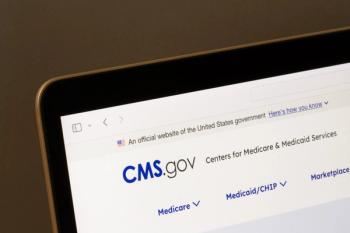
- Total Pharmacy® October 2024
- Volume 02
- Issue 05
Medication Therapy Management: Improving Patient Outcomes and Pharmacy Income
Medication therapy management can change the trajectory of patient health outcomes. Here is how pharmacists can ensure adherence and compensation.
Among the myriad tasks a community pharmacist performs—providing immunizations, filling prescriptions, consulting with prescribers, and giving wellness advice—perhaps the most important is patient counseling. Under this counseling falls medication therapy management (MTM), a crucial service for patients.
The term medication therapy management first entered broad use in the US in 2006 with the implementation of Medicare Part D. Along with this program, medication management services (MMSs)—which can include MTM, comprehensive medication management, and collaborative medication management—were implemented to help patients manage their covered medications, with the goal of complementing patient care plans “to help ensure increased safety and efficacy of drug therapy,” according to an article published in Pharmacy.1 As the authors noted, “Pharmacists often play a critical role in executing MMSs, which tend to be directed by insurance plans, in managing patients with specific demographics or health problems.”1
Pharmacists and MTM
In 2007, the Institute for Healthcare Improvement introduced “the triple aim of health care,” which included improving patients’ individual experience of care, enhancing patient outcomes, and lowering health care costs. A few years later, this idea expanded to “the quadruple aim” to include the well-being of practitioners. Most recently, health equity was added to the mix with “the quintuple aim.”2
One year after the original term was coined, authors of a study published in Health Affairs3 acknowledged the need for some type of facilitator to ensure the implementation of these health care goals. In their article, the authors noted, “Improving the US health care system requires [the] simultaneous pursuit of 3 aims: [i]mproving the experience of care, improving the health of populations, and reducing per capita health care costs. Preconditions for this include the enrollment of an identified population, a commitment to universality for its members, and the existence of an organization (an “integrator”) that accepts responsibility for all 3 aims for that population.”
But who would take on the role of integrator? In another article published in 2010,4 Lucinda L. Maine, PhD, RPh, executive vice president and CEO of the American Association of Colleges of Pharmacy, wrote that as 30 million newly insured patients entered the health care system, “pharmacists must contribute significantly to expanded access to primary care service delivery. Indeed, I believe we are educating an integrator for future care delivery systems.”
In the intervening decades, MTM has come to rest largely in the capable hands of pharmacists. “MTM helps pharmacists identify and resolve issues such as duplicate therapies, unwanted [adverse] effects, drug interactions, and medication omissions,” said Renee Price, PharmD, of Graves Drug and Damm Pharmacies, and CPESN Kansas managing network facilitator in Winfield, Kansas. “When patients are educated about the importance of their medications, they are more likely to be adherent and achieve desired outcomes.”
Further, as trusted health care providers, pharmacists are well positioned to manage and optimize a patient’s medication therapy. “Conducting MTM allows pharmacists to leverage their expertise, especially when they have a comprehensive view of all medications a patient is taking,” explained Patrick Chancy, PharmD, of Chancy Drugs in Hahira, Georgia. MTM can also be targeted for patients with specific health conditions.
Candis M. Morello, PharmD, is a professor of clinical pharmacy and associate dean for student affairs at UC San Diego Skaggs School of Pharmacy and Pharmaceutical Sciences in La Jolla, California. She works as a clinical pharmacist practitioner in an ambulatory care setting under the umbrella of MMS. “For me, it is work specifically related to diabetes, hypertension, hyperlipidemia, and other comorbidities associated with diabetes,” she noted. Pharmacists make the ideal conduit for these screenings, Morello believes, because “pharmacists are licensed professionals who have doctorate degrees: They graduated from a clinical training program or accredited school of pharmacy. Many of us have gone on to complete residency training; we’ve had extra training in addition to the school training, and, on top of that, we do have that temporal relationship within the community to patients coming in and getting their medications.”
In a commentary article penned with her colleagues, Morello discussed the successful outcomes of transferring this experience of ambulatory care medication management into the community setting. In the article, she noted key success factors such as maximizing a pharmacist’s unique knowledge base and skill set, forming collaborations with physicians and other health care providers, and demonstrating outcomes and value. “Opportunities exist for pharmacists in the community setting to utilize these success factors when developing, implementing, and/or expanding direct patient care services that improve accessibility to quality care and population health,”5 Morello and colleagues wrote.
READ MORE:
Encouraging Patients to Use MTM
With the value of these services undisputed, just 1 question remains: How can pharmacists ensure patient adherence?
“There are several effective strategies to encourage patient participation in MTM,” Chancy said. “The most important approach is to help patients understand that even if they have been taking certain medications for a long time, their therapy requires periodic review. This review helps determine if the medications are still necessary, if there are any duplications of therapy, or if any medications (including [OTC] medications) taken concurrently could lead to drug interactions.”
“Pharmacists, particularly those in independent community settings, can leverage their established trust and rapport with patients to promote MTM services,” Price added. “Scheduling MTM consultations during medication synchronization pick-ups or addressing MTM during discussions about new medications, transitions in care, or medication-related issues (such as affordability or [adverse] effects) can increase patient engagement. Patients are more likely to see value in MTM when the opportunity is presented at a time when they have questions or are receiving important information from the pharmacist.”
Morello believes pharmacists are using the practice much more regularly now than before 2020. “A lot changed after the pandemic. Now 90% of community pharmacists provide vaccinations. I think patients are becoming more used to pharmacists providing all kinds of health services. It is just becoming more commonplace. After all, it is the pharmacists on the front line, right there, able to help patients. I’m not sure we have to convince them anymore. But what we do have to do is work harder overall at convincing payers to pay for those services.”
Compensation for the Pharmacist
Typically, said Price, pharmacists use specific platforms to connect pharmacies, payers, and pharmaceutical manufacturers for MTM compensation. However, Price explained, “We are seeing more and more that pharmacists are learning how to credential and contract on the medical side. While this can be a more complicated method, it allows the pharmacist to identify patients who might need these services now, rather than being assigned patients on an annual basis.”
Nevertheless, the issue of payment can get complicated. “Currently, pharmacists are often engaged in MTM through opportunities identified via insurance claims platforms, which can reveal issues not captured in the pharmacy’s drug profile software,” Chancy said. “However, compensation is usually limited to what is covered by prescription insurance. This leaves a gap where pharmacists are not compensated for medications purchased outside of insurance, such as through cash payments. There is potential for pharmacists to receive compensation on the medical side, identifying opportunities beyond what prescription insurance covers. Expanding compensation models could better recognize pharmacists’ contributions to patient care through MTM and expand their reach for preventing adverse drug events.”
In April 2024, an article in Clinical Pharmacy Forum spelled out just this issue with a review, by state, of regulations that support pharmacist payment for these types of clinical services.6 In the article, author Jonathan Hughes, PharmD, noted, “Despite expanded scopes of practice that facilitate collaborative models, pharmacists often face significant barriers due to inconsistent and insufficient reimbursement for their clinical services.” The review compares how individual states approach pharmaceutical reimbursement for such services, with congressional bills in various stages throughout the country.
In California, for example, pharmacists have been recognized as health care providers with authority to provide myriad health care services since 2013; in 2023, another bill was passed to remove statutory barriers for pharmacists to bill health insurance providers for authorized patient services.6 In Wyoming, as of July 2023, reimbursement has been authorized for services offered by licensed pharmacists within their scope of practice, which includes services rendered under the state’s Medical Assistance and Services Act. And in West Virginia, legislation passed in 2020 not only prohibited the denial of coverage of pharmacist services but also required health plans to include an adequate number of pharmacists in their network of participating health care providers.
“The varied landscape of pharmacist reimbursement through state-based legislation and regulations is both encouraging, as it demonstrates progress, as well as staggering, as it displays nuance,” Hughes concluded. “Recent legislative and regulatory developments not only represent untapped opportunities to create cost-sustained pharmacy practice models that enhance patient care but also underscore the necessity for ongoing advocacy and legislative refinement to fully realize payment parity.”6
In the end, Price’s advice for implementing MTM in community settings is this: “If managed well, MTMs can provide a significant income source for pharmacies and should be taken advantage of for that reason in addition to the improved patient care. Pharmacists should consider utilizing MTMs as an opportunity to increase patient adherence, promote packaging and other services, capture OTC business, and evaluate needs for immunizations. Your pharmacy technicians should help with many of the preparation and follow-up tasks to further improve the return on investment of this service.”
READ MORE:
Ready to impress your pharmacy colleagues with the latest drug information, industry trends, and patient care tips? Sign up today for our
References
1. Knockel LE, Kim Y, Kent K, Doucette WR. Medication-related problems and interventions identified and addressed by pharmacists conducting enhanced medication therapy management services. Pharmacy (Basel). 2022;10(5):111. doi:10.3390/pharmacy10050111
2. Itchhaporia D. The evolution of the quintuple aim: health equity, health outcomes, and the economy. J Am Coll Cardiol. 2021;78(22):2262-2264. doi:10.1016/j.jacc.2021.10.018
3. Berwick DM, Nolan TW, Whittington J. The triple aim: care, health, and cost. Health Aff(Millwood). 2008;27(3):759-769. doi:10.1377/hlthaff.27.3.759
4.Maine LL. Are we preparing the integrators? Am J Pharm Educ. 2010;74(10):178. 2010;74(10:178. doi:10.5688/aj7410178
5. Luli AJ, Awdishu L, Hirsch JDA, Watanabe JH, Bounthavong M, Morello CM. Transferring key success factors from ambulatory care into the community pharmacy in the United States. Pharmacy (Basel). 2021;9(3):116. doi:10.3390/pharmacy9030116
6. Hughes J. State of the union: a review of state-based laws and regulations supporting pharmacist payment for clinical services. J Am Col Clin Pharm.2024. doi:10.1002/jac5.2008
Articles in this issue
about 1 year ago
Use MTM and Patient Engagement Solutions to Increase Profitsabout 1 year ago
Midyear Pharmacy Update: Evaluating the Impact of DIR Feesabout 1 year ago
Q&A: PBM Legislation “Highly Likely” to Pass This YearNewsletter
Pharmacy practice is always changing. Stay ahead of the curve with the Drug Topics newsletter and get the latest drug information, industry trends, and patient care tips.





















































































































































